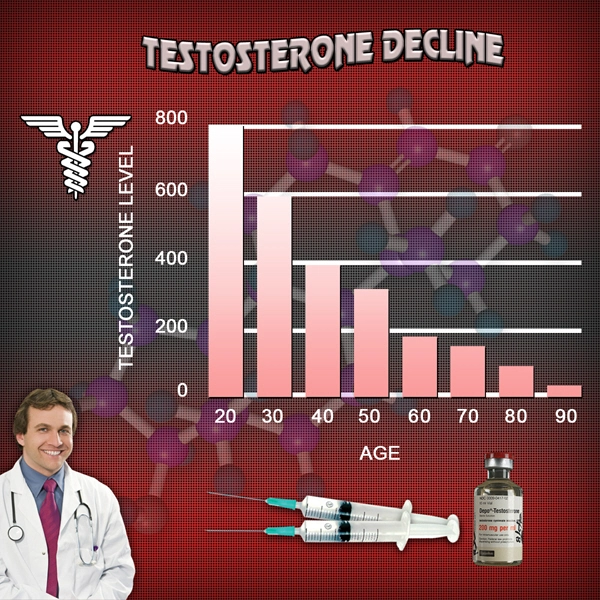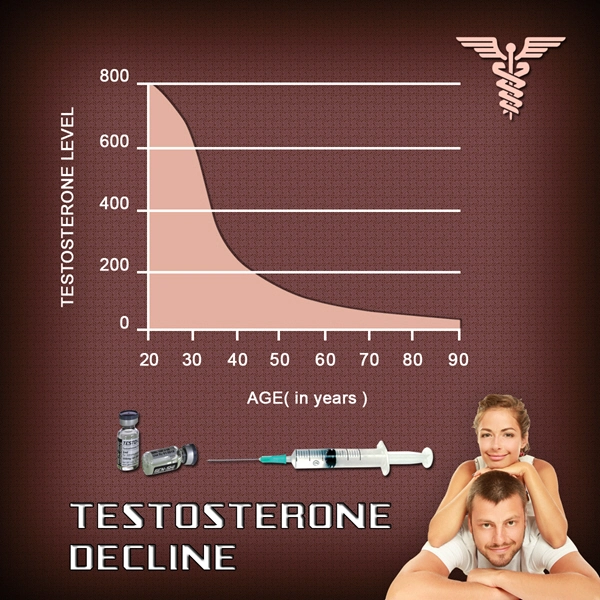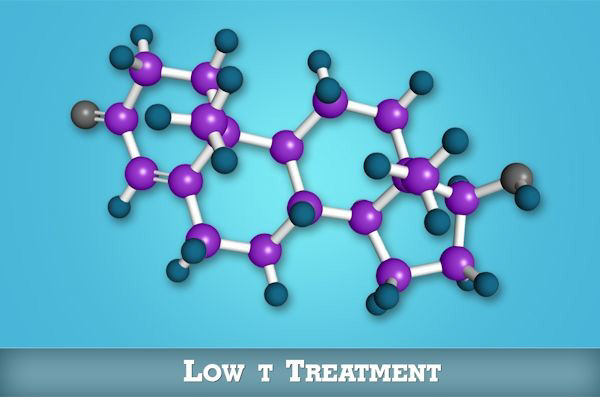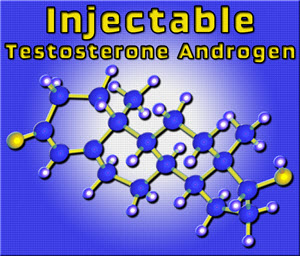Introduction to Natesto and Heart Health
Natesto, a nasal testosterone gel, has become a popular choice for men seeking to address low testosterone levels. As American males increasingly turn to testosterone replacement therapy (TRT), understanding the effects of such treatments on overall health, particularly heart health, is crucial. This article explores the relationship between Natesto and cholesterol levels, providing essential insights for men committed to maintaining optimal cardiovascular health.
Understanding Cholesterol and Its Role in Heart Health
Cholesterol is a vital substance in the body, necessary for the production of hormones, vitamin D, and bile acids that aid in digestion. However, an imbalance in cholesterol levels, particularly high levels of low-density lipoprotein (LDL) or "bad" cholesterol, can lead to atherosclerosis, increasing the risk of heart disease. High-density lipoprotein (HDL) or "good" cholesterol, on the other hand, helps remove LDL from the bloodstream, thus promoting heart health.
The Link Between Testosterone and Cholesterol
Testosterone, the primary male sex hormone, plays a significant role in regulating cholesterol levels. Research indicates that testosterone can influence lipid metabolism, potentially affecting both HDL and LDL levels. For men using testosterone replacement therapies like Natesto, monitoring these levels becomes an integral part of managing heart health.
Natesto's Impact on Cholesterol Levels
Studies examining the effects of Natesto on cholesterol levels have yielded mixed results. Some research suggests that testosterone therapy, including Natesto, may lead to a decrease in HDL cholesterol, which could theoretically increase cardiovascular risk. However, other studies indicate that testosterone can also lower LDL cholesterol, potentially offsetting some of the negative effects on HDL.
A comprehensive review of clinical trials involving Natesto revealed that while there may be a slight decrease in HDL levels, the overall impact on cardiovascular health remains minimal when compared to other forms of TRT. This suggests that Natesto might be a safer option for men concerned about heart health.
Managing Cholesterol Levels While Using Natesto
For American males using Natesto, proactive management of cholesterol levels is essential. Regular monitoring through blood tests can help track changes in HDL and LDL levels, allowing for timely adjustments in treatment. Additionally, adopting a heart-healthy lifestyle can mitigate potential risks associated with testosterone therapy.
Lifestyle Modifications for Heart Health
Incorporating regular physical activity, maintaining a balanced diet rich in fiber and omega-3 fatty acids, and avoiding smoking are crucial steps in managing cholesterol levels. Exercise, in particular, has been shown to increase HDL levels and improve overall cardiovascular health. A diet low in saturated fats and high in fruits, vegetables, and whole grains can also help lower LDL cholesterol.
Consulting Healthcare Providers
Before starting Natesto or any testosterone replacement therapy, American males should consult with their healthcare providers. A thorough evaluation of individual health risks, including a detailed lipid profile, can guide the decision-making process. Healthcare professionals can also provide personalized recommendations for monitoring and managing cholesterol levels during TRT.
Conclusion: Balancing Testosterone Therapy and Heart Health
Natesto offers a convenient and effective solution for men dealing with low testosterone. While its impact on cholesterol levels requires careful consideration, the overall risk to heart health appears manageable with proper monitoring and lifestyle adjustments. American males can confidently navigate testosterone replacement therapy by staying informed and proactive about their cardiovascular health.
In summary, Natesto can be a valuable tool in managing low testosterone, but it should be used in conjunction with a comprehensive approach to heart health. By understanding the relationship between testosterone and cholesterol, and by adopting a heart-healthy lifestyle, men can optimize their overall well-being while on TRT.
Contact Us Today For A Free Consultation

- Natesto Nasal Gel: Enhancing Cognitive Function in American Males with Testosterone Therapy [Last Updated On: March 17th, 2025] [Originally Added On: March 17th, 2025]
- Natesto: Enhancing Sleep Quality and Testosterone Levels in American Men [Last Updated On: March 18th, 2025] [Originally Added On: March 18th, 2025]
- Natesto: Enhancing Energy and Combating Fatigue in Men with Hypogonadism [Last Updated On: March 18th, 2025] [Originally Added On: March 18th, 2025]
- Natesto: Effective Testosterone Therapy for Aging American Men's Health and Well-being [Last Updated On: March 19th, 2025] [Originally Added On: March 19th, 2025]
- Natesto: Enhancing Weight Management in American Men with Low Testosterone [Last Updated On: March 20th, 2025] [Originally Added On: March 20th, 2025]
- Natesto: Monitoring Essential for Safe Testosterone Therapy in American Men [Last Updated On: March 21st, 2025] [Originally Added On: March 21st, 2025]
- Natesto: A Skin-Friendly Testosterone Therapy for American Men [Last Updated On: March 21st, 2025] [Originally Added On: March 21st, 2025]
- Natesto: Enhancing Athletic Performance in American Male Athletes Through Nasal Testosterone Therapy [Last Updated On: March 21st, 2025] [Originally Added On: March 21st, 2025]
- Natesto vs. Traditional Gels: A Guide to Testosterone Replacement Therapy Options [Last Updated On: March 21st, 2025] [Originally Added On: March 21st, 2025]
- Natesto: Revolutionizing Testosterone Therapy with Nasal Gel in American Men [Last Updated On: March 21st, 2025] [Originally Added On: March 21st, 2025]
- Natesto: A Novel Testosterone Therapy and Its Impact on Prostate Health in Men [Last Updated On: March 22nd, 2025] [Originally Added On: March 22nd, 2025]
- Tailoring Natesto Dosage for Optimal Testosterone Therapy in American Men [Last Updated On: March 22nd, 2025] [Originally Added On: March 22nd, 2025]
- Natesto: A Convenient Nasal Gel for Low Testosterone in American Men [Last Updated On: March 22nd, 2025] [Originally Added On: March 22nd, 2025]
- Natesto: Revolutionizing Testosterone Therapy and Reducing Stigma in American Men [Last Updated On: March 22nd, 2025] [Originally Added On: March 22nd, 2025]
- Natesto: Revolutionizing Testosterone Therapy with Intranasal Delivery for American Men [Last Updated On: March 22nd, 2025] [Originally Added On: March 22nd, 2025]
- Natesto: A Breakthrough in Hypogonadism Treatment for American Men [Last Updated On: March 22nd, 2025] [Originally Added On: March 22nd, 2025]
- Natesto's Impact on Blood Sugar Levels in Diabetic American Men: A Comprehensive Analysis [Last Updated On: March 23rd, 2025] [Originally Added On: March 23rd, 2025]
- Natesto: Enhancing Emotional Well-being in American Men with Hypogonadism [Last Updated On: March 23rd, 2025] [Originally Added On: March 23rd, 2025]
- Natesto: Testosterone Therapy's Impact on Cardiovascular Health in American Males [Last Updated On: March 23rd, 2025] [Originally Added On: March 23rd, 2025]
- Natesto: Convenient Nasal Gel for Hypogonadism Treatment in American Men [Last Updated On: March 23rd, 2025] [Originally Added On: March 23rd, 2025]
- Natesto: Enhancing Joint Health and Mobility in American Men with Testosterone Therapy [Last Updated On: March 24th, 2025] [Originally Added On: March 24th, 2025]
- Natesto: Nasal Gel Boosts Libido in Men with Low Testosterone [Last Updated On: March 24th, 2025] [Originally Added On: March 24th, 2025]
- Natesto: Innovative Nasal Gel for Testosterone Replacement in American Men [Last Updated On: March 24th, 2025] [Originally Added On: March 24th, 2025]
- Natesto: Non-Invasive Nasal Gel for Testosterone Replacement in American Men [Last Updated On: March 24th, 2025] [Originally Added On: March 24th, 2025]
- Natesto's Impact on Vision: Risks and Monitoring for American Men [Last Updated On: March 25th, 2025] [Originally Added On: March 25th, 2025]
- Natesto: A Promising Nasal Gel for Chronic Fatigue in Men with Low Testosterone [Last Updated On: March 25th, 2025] [Originally Added On: March 25th, 2025]
- Natesto: Advancing Men's Health with Nasal Testosterone Therapy in America [Last Updated On: March 25th, 2025] [Originally Added On: March 25th, 2025]
- Natesto: A Convenient, Effective Nasal Gel for American Men's Testosterone Deficiency [Last Updated On: March 25th, 2025] [Originally Added On: March 25th, 2025]
- Natesto: Enhancing Mental Clarity and Cognitive Function in American Men [Last Updated On: March 26th, 2025] [Originally Added On: March 26th, 2025]
- Maximizing Natesto Benefits: Diet, Exercise, and Lifestyle for American Men [Last Updated On: March 26th, 2025] [Originally Added On: March 26th, 2025]
- Natesto: Enhancing Vitality in American Men with Nasal Testosterone Gel [Last Updated On: March 26th, 2025] [Originally Added On: March 26th, 2025]
- Natesto: Enhancing Stress Management for American Men in High-Pressure Environments [Last Updated On: March 26th, 2025] [Originally Added On: March 26th, 2025]
- Natesto: Boosting Confidence and Self-Esteem in American Men with Low Testosterone [Last Updated On: March 26th, 2025] [Originally Added On: March 26th, 2025]
- Natesto: FDA-Approved Nasal Gel for Treating Male Hypogonadism [Last Updated On: March 26th, 2025] [Originally Added On: March 26th, 2025]
- Natesto's Impact on Kidney Health in American Men: Monitoring and Lifestyle Considerations [Last Updated On: March 26th, 2025] [Originally Added On: March 26th, 2025]
- Natesto: Safe Nasal Testosterone Therapy for Hypogonadism in American Men [Last Updated On: March 26th, 2025] [Originally Added On: March 26th, 2025]
- Natesto: Innovative Nasal Gel for Testosterone Deficiency in American Men [Last Updated On: March 26th, 2025] [Originally Added On: March 26th, 2025]
- Natesto: Enhancing Physical Strength in American Males with Hypogonadism [Last Updated On: March 26th, 2025] [Originally Added On: March 26th, 2025]
- Natesto: Innovative Nasal Gel for Testosterone Deficiency in American Men [Last Updated On: March 26th, 2025] [Originally Added On: March 26th, 2025]
- Natesto: Revolutionizing Testosterone Therapy for Aging American Males [Last Updated On: March 27th, 2025] [Originally Added On: March 27th, 2025]
- Natesto: Testosterone Therapy and Its Impact on Male Hair Loss in American Men [Last Updated On: March 27th, 2025] [Originally Added On: March 27th, 2025]
- Natesto: Transforming Lives of American Men with Low Testosterone [Last Updated On: March 27th, 2025] [Originally Added On: March 27th, 2025]
- Natesto: Enhancing Vitality and Performance in American Males with Testosterone Therapy [Last Updated On: March 27th, 2025] [Originally Added On: March 27th, 2025]
- Natesto: Enhancing Preventive Health in American Males with Nasal Testosterone Therapy [Last Updated On: March 28th, 2025] [Originally Added On: March 28th, 2025]
- Natesto: Nasal Testosterone Gel Reduces Skin Sensitivity in Men [Last Updated On: March 28th, 2025] [Originally Added On: March 28th, 2025]
- Natesto: Enhancing Immune Health in American Men Through Intranasal Testosterone Therapy [Last Updated On: March 28th, 2025] [Originally Added On: March 28th, 2025]
- Natesto: Nasal Testosterone Gel's Impact on Liver Function in American Men [Last Updated On: March 28th, 2025] [Originally Added On: March 28th, 2025]
- Natesto: A Novel Treatment for Sleep Apnea in Men with Low Testosterone [Last Updated On: March 28th, 2025] [Originally Added On: March 28th, 2025]
- Natesto: Innovative Nasal Gel for American Men's Low Testosterone Treatment [Last Updated On: March 29th, 2025] [Originally Added On: March 29th, 2025]
- Natesto: Testosterone Gel's Impact on Gut Health in American Males [Last Updated On: March 29th, 2025] [Originally Added On: March 29th, 2025]
- Natesto: Revolutionary Nasal Gel for Testosterone Replacement in American Men [Last Updated On: March 30th, 2025] [Originally Added On: March 30th, 2025]
- Natesto: Managing Side Effects and Benefits for Low Testosterone Treatment [Last Updated On: March 31st, 2025] [Originally Added On: March 31st, 2025]
- Natesto: Enhancing Recovery and Health in American Men with Testosterone Therapy [Last Updated On: April 1st, 2025] [Originally Added On: April 1st, 2025]
- Natesto: Managing Dental Health Impacts from Testosterone Nasal Gel Therapy [Last Updated On: April 1st, 2025] [Originally Added On: April 1st, 2025]
- Natesto: Nasal Testosterone Gel for Male Hypogonadism and Allergic Reaction Risks [Last Updated On: April 3rd, 2025] [Originally Added On: April 3rd, 2025]
- Natesto: Enhancing Mental Health and Well-being in American Men with Testosterone Deficiency [Last Updated On: April 7th, 2025] [Originally Added On: April 7th, 2025]
- Natesto: Enhancing Endurance and Stamina in American Men with Low Testosterone [Last Updated On: April 7th, 2025] [Originally Added On: April 7th, 2025]
- Natesto: Impact on Blood Pressure in American Men Using Nasal Testosterone Therapy [Last Updated On: April 7th, 2025] [Originally Added On: April 7th, 2025]
- Natesto: Effective Intranasal Testosterone Therapy for American Men with Hypogonadism [Last Updated On: April 8th, 2025] [Originally Added On: April 8th, 2025]
- Natesto: Intranasal Testosterone Therapy for American Males - Dosage, Timing, and Lifestyle [Last Updated On: April 9th, 2025] [Originally Added On: April 9th, 2025]
- Natesto's Impact on Thyroid Function: Considerations for American Men [Last Updated On: April 11th, 2025] [Originally Added On: April 11th, 2025]
- Natesto: Managing Testosterone and Digestive Health in American Men [Last Updated On: April 13th, 2025] [Originally Added On: April 13th, 2025]
- Natesto: Enhancing Immune Health in American Males Through Testosterone Therapy [Last Updated On: April 13th, 2025] [Originally Added On: April 13th, 2025]
- Natesto: Testosterone Therapy's Impact on Hearing Health in American Men [Last Updated On: April 13th, 2025] [Originally Added On: April 13th, 2025]
- Natesto: FDA-Approved Nasal Gel for Testosterone Replacement in Men [Last Updated On: April 14th, 2025] [Originally Added On: April 14th, 2025]
- Natesto: Testosterone Therapy's Impact on Vision Health in American Males [Last Updated On: April 14th, 2025] [Originally Added On: April 14th, 2025]
Word Count: 586





















